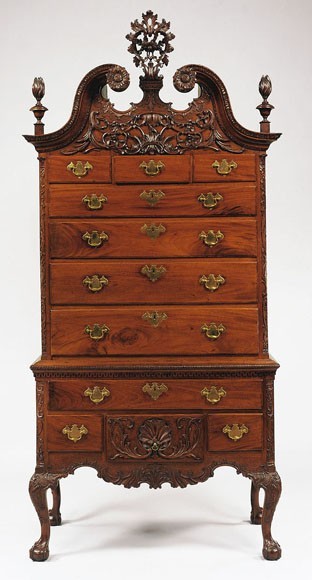
High chest of drawers, Philadelphia, 1762–1775. Mahogany with yellow pine, tulip poplar. H. 99", W. 45 1/2", D. 25". (Courtesy, The Metropolitan Museum of Art, John Stewart Kennedy Fund, 1918, 18.110.6 All rights reserved, The Metropolitan Museum of Art.)
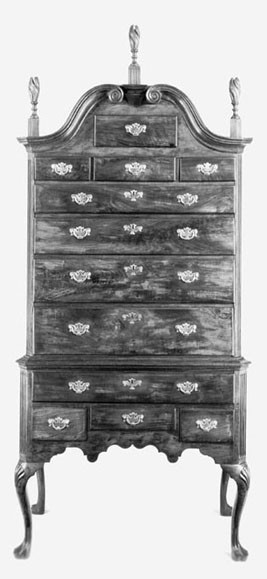
High chest of drawers, Philadelphia, 1740–1750. Walnut with cedar and gum. H. 96 1/4", W. 43", D. 23 1/8". (Courtesy, Winterthur Museum.)
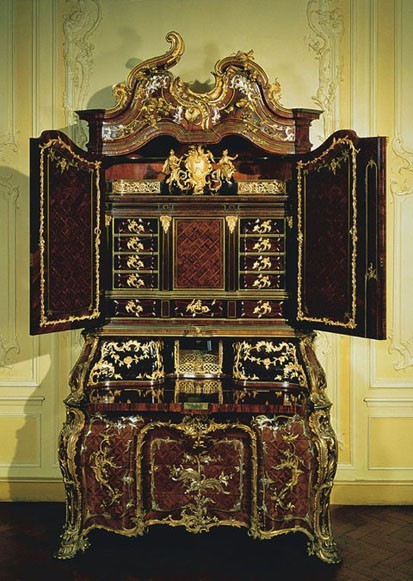
Bureau with cabinet, Germany, probably Dresden, ca. 1750. Kingwood; mother-of-pearl, ivory, brass, ormolu mounts. H. 107 1/2", W. 50", D. 29 1/8". (Courtesy, Victoria and Albert Museum.) www.vam.ac.uk
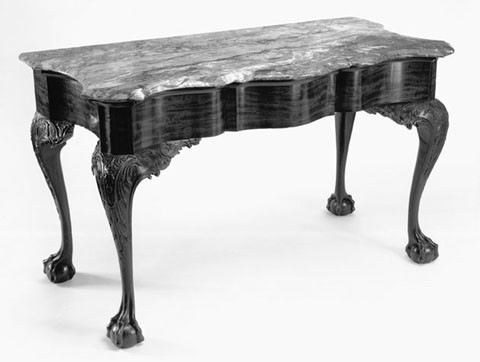
Slab table with carving attributed to Hercules Courtenay, Philadelphia, 1765–1775. Mahogany and marble. H. 32", W. 54", D. 27". (Courtesy, Rhode Island School of Design, bequest of Charles L. Pendleton.) www.risd.edu

Jean-Honoré Fragonard, Mme. Guimard, Paris, 1769. Oil on canvas. (Courtesy, Louvre Museum, Cliché des Musées Nationaux, Paris; photo, Giraudon/Art Resource, New York.)
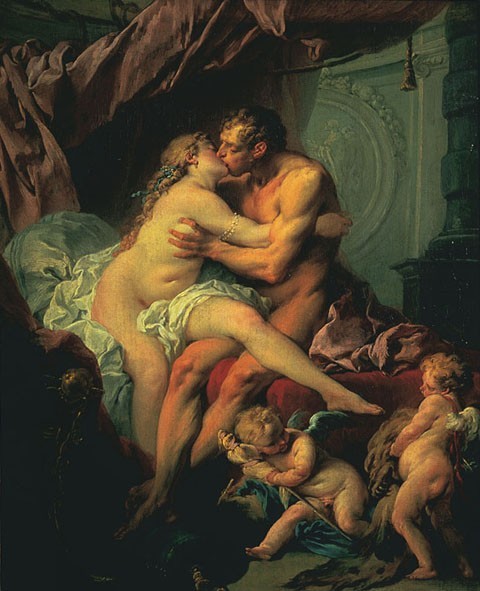
Francois Boucher, Hercules and Omphale, Paris, ca. 1731–1734. Oil on canvas. (Courtesy, Pushkin Fine Art Museum, Moscow; photo, Scala/Art Resource, New York.)
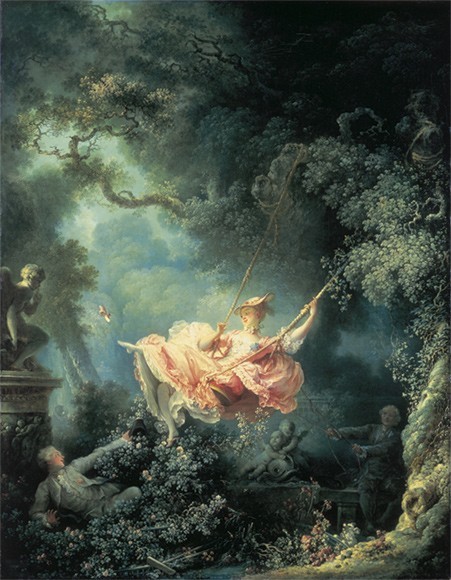
Jean-Honoré Fragonard, The Swing, Paris, 1767. Oil on canvas. (©By kind permission of the Trustees of the Wallace Collection, London)
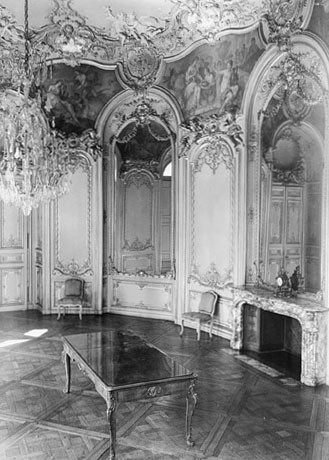
Salon de la Princesse, Hotel de Soubise, Germain Boffrand, Paris, 1735. (Giraudon/Art Resource, New York.)
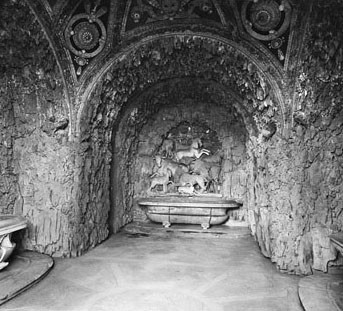
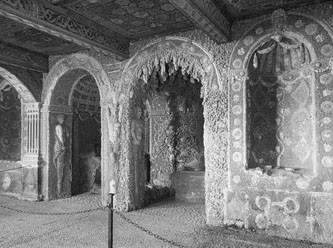
La Bastie d’Urfé, Forez, Italy, grotto 1551. (Courtesy, Dr. Naomi Miller.)
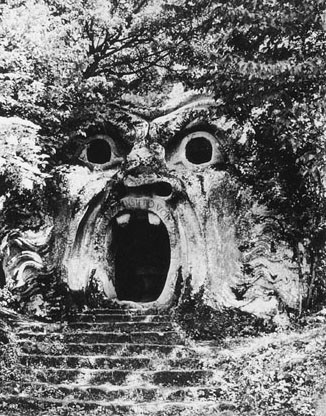
Sacra Bosco, Bormazo, Italy, ca. 1550–1570. (Courtesy, G. Putnam and Co., New York.)

Jean Mondon, Le Galand Chasseur, Paris, 1736. Engraving on paper. (Courtesy, The Metropolitan Museum of Art, Harry Brisbane Dick Fund, 1930, 30.58.2(65). All rights reserved, The Metropolitan Museum of Art.)

Gottlieb Leberecht Crusius, Capriccio, Germany, 1762. (Courtesy, Staatliche Museen Preussischer Kulturbesitz, Kunstbibliothek, Berlin; photo, Marburg/Art Resource, New York.)

Center ornament from a high chest of drawers, Philadelphia, 1760–1768. Mahogany. H. 11 3/8". (Courtesy, Philadelphia Museum of Art.)
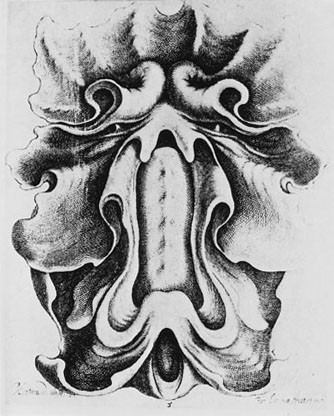
Jacobus Lutma, Festivities (from a twelve-part series), Holland, 1654. Illustrated in Rudolph Berliner and Gerhart Egger, Ornamentale Vorlagebläter (Munich: Klinkhardt & Biermann, 1981), fig. 1006.
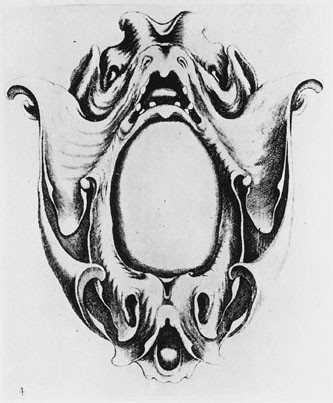
Jacobus Lutma, Festivities (from a twelve-part series), Holland, 1654. Illustrated in Rudolph Berliner and Gerhart Egger, Ornamentale Vorlagebläter (Munich: Klinkhardt & Biermann, 1981), fig. 1005.

Adam van Vianen, tazza, Utrecht, 1618. Silver. (Courtesy, Rijksmuseum, Amsterdam.)

Adam van Vianen, tazza, Utrecht, 1618. Silver. (Courtesy, Rijksmuseum, Amsterdam.)
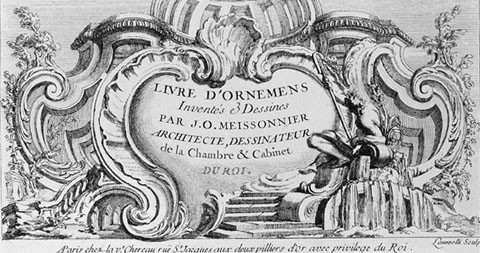
Juste-Aurèle Meissonier, title page from Livre d’Ornemens, Paris, 1734. (Courtesy, The Metropolitan Museum of Art, Harris Brisbane Dick Fund, 1930, 30.58.2(136), All rights reserved, The Metropolitan Museum of Art.)

Engraving from Braccelli di varie Égure di Givovanbattista Braccelli, Livorno, Italy, 1624. (Courtesy, Library of Congress.)
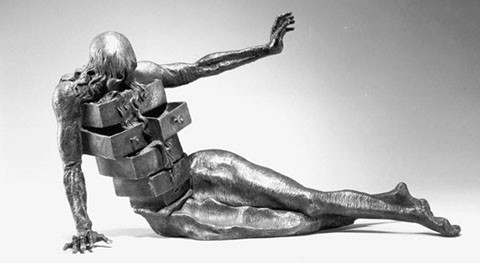
Salvador Dali, Le Cabinet Anthropomorphique, ca. 1935. Bronze. L. 24". (Photograph Courtesy of Sotheby’s, Inc. ©2002)

André Groult, high chest of drawers, Paris, ca. 1935. H. 59", W. 27 7/16", D. 12 7/16". (Courtesy, Claude Boisgirard Auctioneer.)
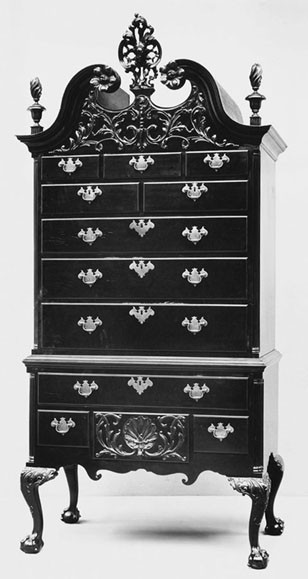
High chest of drawers, Philadelphia, 1762–1775. Mahogany and mahogany veneer with yellow pine, tulip poplar, and white cedar. H. 97 3/4", W. 44 1/4", D. 25 1/2". (Courtesy, The Metropolitan Museum of Art, John Stewart Kennedy Fund, 1918, 18.110.60a,b. All rights reserved, The Metropolitan Museum of Art.)

Berea Masonic Lodge No. 114, A.F. & A.M., Gloucester, Virginia, ca. 1950.
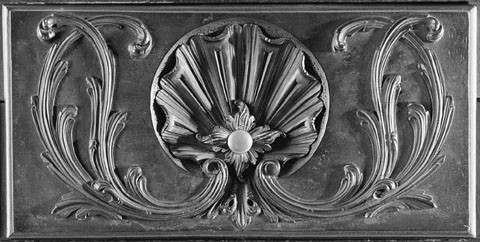
Detail of the carving on a high chest of drawers, Philadelphia, 1765–1775. (Chipstone Foundation; photo, Gavin Ashworth.)
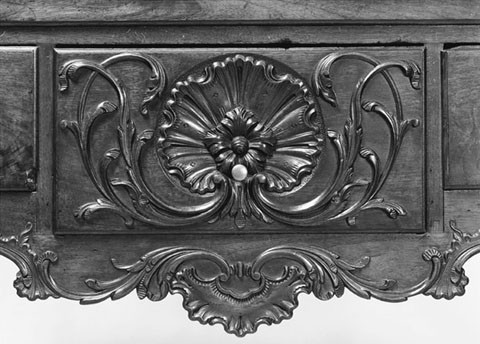
Detail of the carving on a high chest of drawers, Philadelphia, 1763–1768. (Courtesy, Yale University Art Gallery, Mabel Brady Garvan Collection.)

Detail of the carving on a dressing table, Philadelphia, 1750–1760. (Courtesy, Art Institute of Chicago, gift of the Antiquarian Society through the Jessie Spalding Landon Fund.)
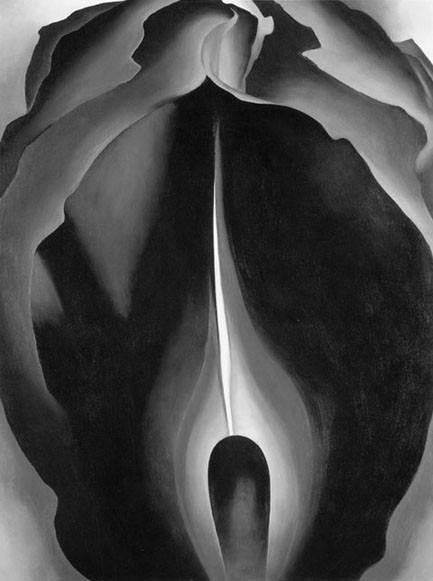
Georgia O’Keeffe, Jack-in-the-Pulpit, No. IV, 1930. Oil on canvas. (Courtesy, National Gallery of Art, Washington, Alfred Stieglitz Collection, bequest of Georgia O’Keffe.)
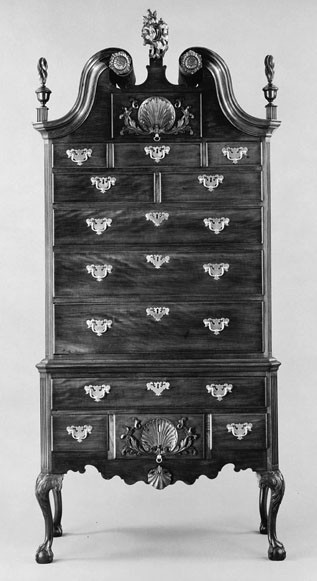
High chest by Henry Clifton and Thomas Carteret (cabinetmakers), Philadelphia, 1753. Mahogany with yellow pine, tulip poplar, and white cedar. H. 96", W. 45", D. 22 1/2". (Courtesy, Colonial Williamsburg Foundation.)

Francois Boucher, Two Nudes, Paris, ca. 1759. Black chalk drawing on paper. (©The Frick Collection, New York; photo, courtesy Colin Bailey.)
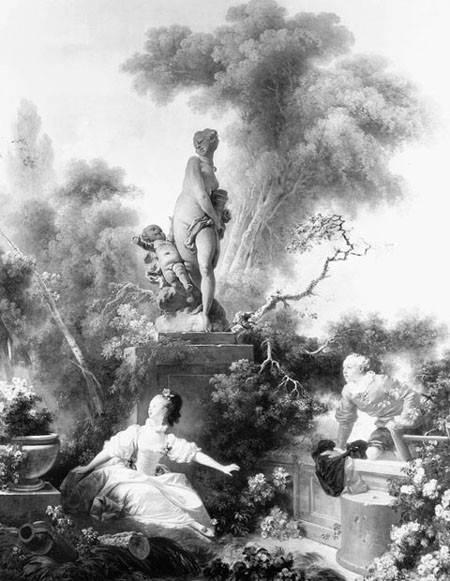
Jean-Honoré Fragonard, Storming the Citadel, Paris, ca. 1771–1773. (©The Frick Collection, New York.)

William Hogarth, Analysis of Beauty, Plate I, London, 1753; reissued, ca. 1835 by James Heath. (Courtesy, Colonial Williamsburg Foundation.)
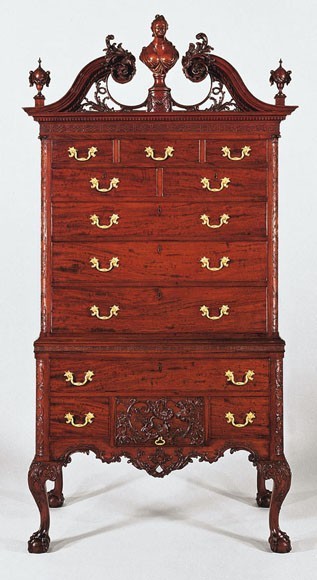
High chest of drawers, Philadelphia, 1755–1790. Mahogany and mahogany veneer with yellow pine, tulip poplar, and white cedar. H. 91 3/4", W. 44 5/8", D. 24 5/8". (Courtesy, The Metropolitan Museum of Art, John Stewart Kennedy Fund, 1918, 18.110.4, All rights reserved, The Metropolitan Museum of Art.)
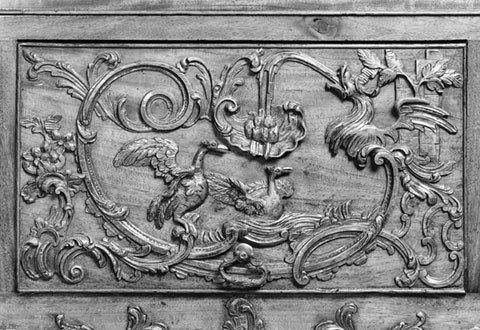
Detail of the carving on the lower drawer of the high chest illustrated in fig. 32.

Francesco di Giorgio Martini, Trattati di archittetura ingegneria e arte militare, Italy, sixteenth century. (Courtesy, Beinecke Rare Book and Manuscript Library, Yale University.)
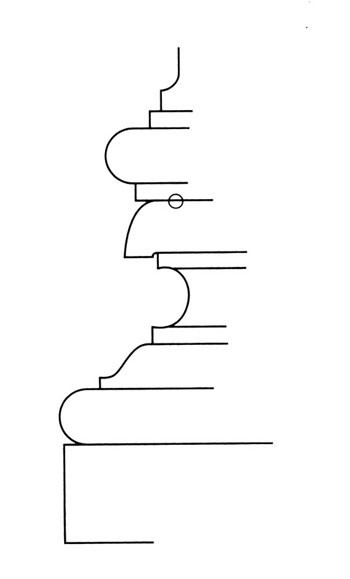
Drawing based on a sketch for a pilaster base in the Medici Chapel by Michelangelo, Florence, Italy, 1519–1534. Original sketch at Casa Buonarroti, Florence.
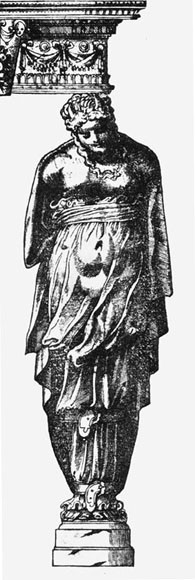
Hughes Sambin, female term from Oeuvre de la Diversité des Termes, 1572. (Courtesy, Beinecke Rare Book and Manuscript Library, Yale Univeristy.)

High chest of drawers, Philadelphia, ca. 1755. Illustrated in Edgar G. Miller, American Antique Furniture, 2 vols. (Baltimore, Md.: Lord Baltimore Press, 1937), 1:377, fig. 664.
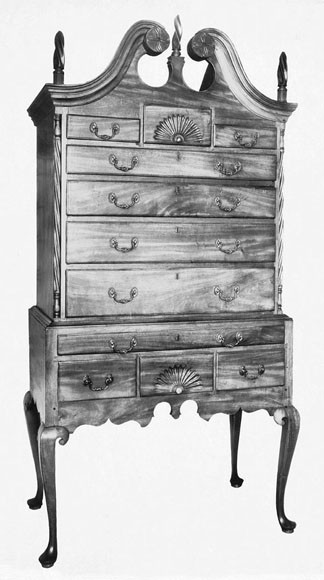
High chest of drawers, New England, ca. 1750. (Courtesy of Sack Heritage Group.) www.sackheritagegroup.com

High chest of drawers, Preston area of Connecticut, 1770–1790. Cherry, birch, and maple with yellow poplar, chestnut, white pine, and oak. H. 82 3/4", W. 39", D. 19 7/8". (Courtesy, Yale University Art Gallery, Mabel Brady Garvan Collection.)
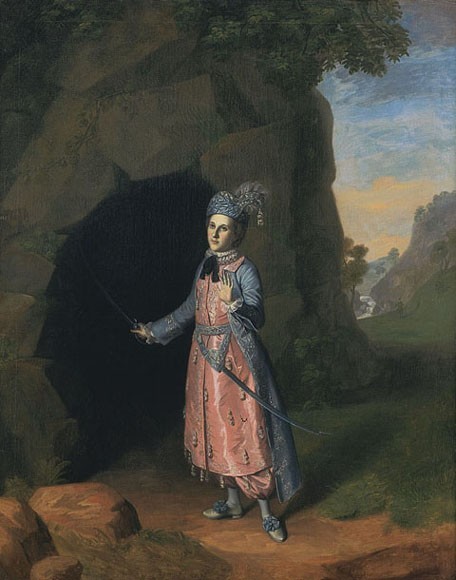
Charles Willson Peale, Nancy Hallam in Cave Scene from Cymbaline, Annapolis, Maryland, 1771. Oil on canvas. 50" x 40 1/4". (Courtesy, Colonial Williamsburg Foundation.)
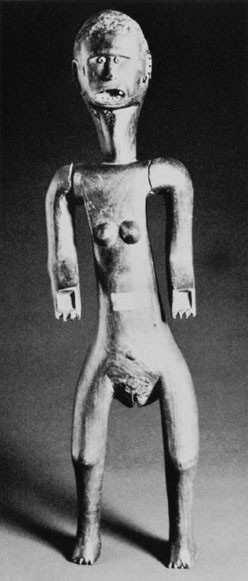
Female figure, central Tanzania, ca. 1900. (Photograph Courtesy of Sotheby’s, Inc. ©2002).
